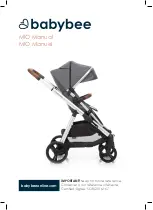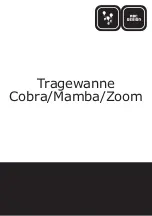
BEDIENUNG/WARTUNG
FLÜSSIGKEITSANLASSER/LIQUID STARTER
Seite/ page 2
OPERATION/MAINTENANCE
AFA, DAFA, SFA, (K) (P)
W:\Vertrieb\Betriebsanleitung\Betriebsanleitung AFA\Anleitung DE\Betriebsanleitung DEneu.doc
BEA-Flüssigkeitsanlasser entsprechen den VDE-
Vorschriften 0660-T3, EN 17B.
BEA-Doppelflüssiganlasser (DAFA) bestehen aus
zwei Einzelanlassern (AFA) mit gemeinsamem Stell-
antrieb. Damit werden beide Elektrodensysteme
gleichmäßig und gleichzeitig verstellt. Für den Elektro-
lytausgleich - Temperatur und Konzentration - sind
beide Behälter mit Rohren (Flanschen) verbunden.
Allgemeine Daten
Schutzart gemäß DIN 40050 und IEC 144
Anlasser IP 43
Antrieb IP 54 bzw. IP 32 (ohne Abdeckhaube)
Kurzschlußschütz IP 54
Überwachungsgeräte IP 54
Rotorstillstandsspannung max. 3,5 kV
Rotorstrom max. 3300 A
1.
Ausführung
1.1 Tank zur Aufnahme des Elektrolyten
(Sodalösung) und der Baugruppen:
1.2 Elektrodensystem
1.3 Elektrodenverstellantrieb
1.4 Kurzschlußschütz (je nach Erfordernis)
1.5 Überwachungsgeräte und
Zusatzausrüstung
1.6 Kühler (Anlasser AFAK, SFAK)
1.7 Umwälzpumpe (Anlasser AFAP, SFAP)
1.8 Blockier- und Anlaufüberwachnung
2.
Funktion
3.
Aufstellung
4.
Inbetriebnahme
5.
Wartung
6.
Austausch
BEA liquid starters comply with VDE regulations
0660-T3, EN 17B.
Duplex-type liquid starters (DAFA) consist of two
single starters (AFA) with common setting drive by
which both electrode systems are adjusted uniformly
and simultaneously. For electrolyte compensation -
temperature and concentration - both tanks are
connected by pipes (flanges).
General data
Degree of protection acc. to DIN 40050 and IEC 144
Starter IP 43
Drive IP 54 or IP 32 (without covering hood)
Short-circuit contactor IP 54
Monitoring devices and additional equipment IP 54
Rotor standstill voltage max. 3.5 kV
Rotor current max. 3300 A
1.
Design
1.1. Tank containing the electrolyte (aqueous
solution of sodium carbonate):
1.2. Electrode system
1.3. Electrode setting drive
1.4. Short-circuit contactor (as required)
1.5. Supervision devices and additional
equipment
1.6. Cooling system (starters AFAK, SFAK)
1.7 Circulating pump (starters AFAP, SFAP)
1.8. Locking protection and Start Monitoring
2.
Function
3.
Installation
4.
Commissioning
5.
Maintenance
6.
Replacement































